You searched for: 肯尼亚ust盘源码平台【tg���������@ek7676】平台包网搭建肯尼亚unit盘源码平台【tg���������@ek7676】平台包网搭建ussradxao9
<< Previous | Displaying results 301-350 of 1751 for "肯尼亚ust盘源码平台【tg���������@ek7676】平台包网搭建肯尼亚unit盘源码平台【tg���������@ek7676】平台包网搭建ussradxao9" | Next >>
-
Flag graphic for US 20th Armored Division
PhotoA digital representation of the United States 20th Armored Division's flag. The US 20th Armored Division was occasionally known as the "Armoraiders" during World War II. They participared in the liberation of the Dachau concentration camp. The 20th Armored Division was recognized as a liberating unit in 1985 by the United States Army Center of Military History and the United States Holocaust Memorial Museum (USHMM).
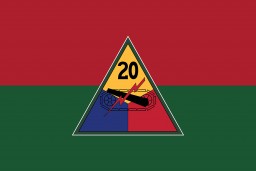
-
Flag graphic for US 4th Armored Division
PhotoA digital representation of the United States 4th Armored Division's flag. The US 4th Armored Division is also known as the "Breakthrough" division. During World War II, they were involved in the Battle of the Bulge and overran Ohrdruf, a subcamp of Buchenwald. The 4th Armored Division was recognized as a liberating unit in 1985 by the United States Army Center of Military History and the United States Holocaust Memorial Museum (USHMM).
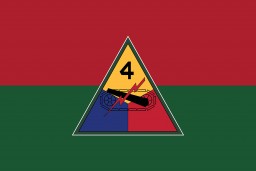
-
Flag graphic for US 63rd Infantry Division
PhotoA digital representation of the United States 63rd Infantry Division's flag. The US 63rd Infantry Division (the "Blood and Fire" division) was established in 1943. During World War II, they took the town of Heidelberg and liberated several Kaufering subcamps. The 63rd Infantry Division was recognized as a liberating unit in 2000 by the United States Army Center of Military History and the United States Holocaust Memorial Museum (USHMM).
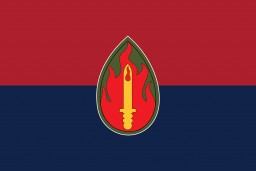
-
Flag graphic for US 6th Armored Division
PhotoA digital representation of the United States 6th Armored Division's flag. The US 6th Armored Division is also known as the "Super Sixth." During World War II, they were involved in the Battle of the Bulge and overran the Buchenwald concentration camp. The 6th Armored Division was recognized as a liberating unit in 1985 by the United States Army Center of Military History and the United States Holocaust Memorial Museum (USHMM).

-
Flag graphic for the US 101st Airborne Division
PhotoA digital representation of the United States 101st Airborne Division's flag. The US 101st Airborne Division (the "Screaming Eagles" division) was established in 1942. During World War II, they were involved in D-Day and the Battle of the Bulge. The division also captured the city of Eindhoven and uncovered the Kaufering IV camp. The 101st Airborne Division was recognized as a liberating unit in 1988 by the United States Army Center of Military History and the United States Holocaust Memorial Museum…

-
Flag graphic for US 26th Infantry Division
PhotoA digital representation of the United States 26th Infantry Division's flag. The US 26th Infantry Division (the "Yankee" division) was formed in 1917 and fought in World War I. During World War II, they were involved in the Battle of the Bulge and captured the city of Linz. The division also overran the Gusen concentration camp. The 26th Infantry Division was recognized as a liberating unit in 2002 by the United States Army Center of Military History and the United States Holocaust Memorial Museum…
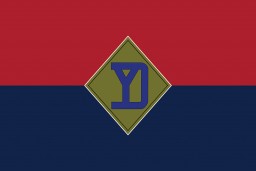
-
Flag graphic for US 36th Infantry Division
PhotoA digital representation of the United States 36th Infantry Division's flag. The US 36th Infantry Division (the "Texas" or "Lone Star" division) was established in 1917 and fought in World War I. During World War II, they were involved in the Allied invasions of North Africa and the Battle of the Bulge. The division also overran some of the Kaufering subcamps of the Dachau concentration camp. The 36th Infantry Division was recognized as a liberating unit in 1995 by the United States Army Center of…
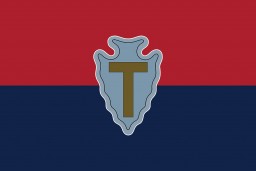
-
Flag graphic for US 42nd Infantry Division
PhotoA digital representation of the United States 42nd Infantry Division's flag. The US 42nd Infantry Division (the "Rainbow" division) was established in 1917 and fought in World War I. During World War II, they captured the cities of Würzburg, Schweinfurt, and Fürth. The division also entered the Dachau concentration camp. The 42nd Infantry Division was recognized as a liberating unit in 1985 by the United States Army Center of Military History and the United States Holocaust Memorial Museum…

-
Flag graphic for US 45th Infantry Division
PhotoA digital representation of the United States 45th Infantry Division's flag. The US 45th Infantry Division (the "Thunderbird" division) was established in 1924. During World War II, they were involved in the Allied invasions of North Africa and Italy, as well as the capture of the city of Nuremberg. The division also liberated the Dachau concentration camp. The 45th Infantry Division was recognized as a liberating unit in 1985 by the United States Army Center of Military History and the United States…
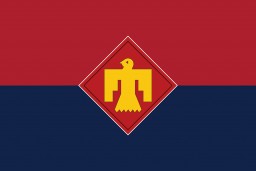
-
Flag graphic for US 71st Infantry Division
PhotoA digital representation of the United States 71st Infantry Division's flag. The US 71st Infantry Division (the "Red Circle" division) was established in 1943. During World War II, they were involved in taking the cities of Coburg, Bayreuth, and Regensburg. The division also liberated Gunskirchen, a subcamp of Mauthausen. The 71st Infantry Division was recognized as a liberating unit in 1988 by the United States Army Center of Military History and the United States Holocaust Memorial Museum (USHMM).

-
Flag graphic for US 82nd Airborne Division
PhotoA digital representation of the United States 82nd Airborne Division's flag. The US 82nd Airborne Division (the "All American" division) was established in 1918 and fought in World War I. During World War II, they were involved in D-Day and Battle of the Bulge. The division also overran Wöbbelin, a subcamp of Neuengamme. The 82nd Airborne Division was recognized as a liberating unit in 1991 by the United States Army Center of Military History and the United States Holocaust Memorial Museum (USHMM).
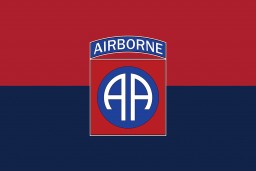
-
Flag graphic for US 84th Infantry Division
PhotoA digital representation of the United States 84th Infantry Division's flag. The US 84th Infantry Division (the "Railsplitter" division) was established in 1917. During World War II, they were involved in the Battle of the Bulge and captured the city of Hannover. The division also uncovered Hannover-Ahlem and Salzwedel, two satellite camps of the Neuengamme concentration camp. The 84th Infantry Division was recognized as a liberating unit in 1993 by the United States Army Center of Military History and…
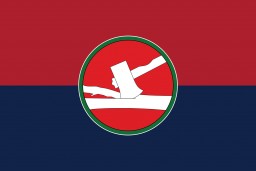
-
Flag graphic for US 89th Infantry Division
PhotoA digital representation of the United States 89th Infantry Division's flag. The US 89th Infantry Division (the "Rolling W" division) was established in 1917 and fought in World War I. During World War II, they captured the town of Eisenach and the city of Zwickau. The division overran Ohrdruf, a subcamp of Buchenwald. The 89th Infantry Division was recognized as a liberating unit in 1988 by the United States Army Center of Military History and the United States Holocaust Memorial Museum (USHMM).

-
Flag graphic for US 8th Infantry Division
PhotoA digital representation of the United States 8th Infantry Division's flag. The US 8th Infantry Division (the "Golden Arrow" or "Pathfinder" division) was established in 1918 and fought in World War I. During World War II, they captured the cities of Rennes and Brest. The division also encountered Wöbbelin, a subcamp of Neuengamme. The 8th Infantry Division was recognized as a liberating unit in 1988 by the United States Army Center of Military History and the United States Holocaust Memorial Museum…
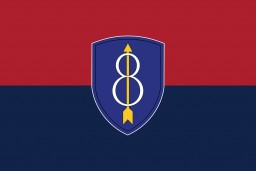
-
Flag graphic for US 90th Infantry Division
PhotoA digital representation of the United States 90th Infantry Division's flag. The US 90th Infantry Division (the "Tough Ombre" division) was established in 1917 and fought in World War I. During World War II, they were involved in D-Day and the Battle of the Bulge. The division also captured the city of Mainz and overran Flossenbürg concentration camp. The 90th Infantry Division was recognized as a liberating unit in 1985 by the United States Army Center of Military History and the United States…

-
UN Convention on the Prevention and Punishment of Genocide
Timeline EventJanuary 12, 1951. On this date, the United Nations Convention on the Prevention and Punishment of Genocide entered into force.
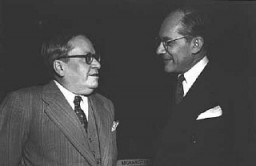
-
US veteran Raymond Buch describes forcing civilians to bury the dead
Oral HistoryAs a US Army sergeant, Raymond fought in the Battle of the Bulge. In May 1945, his unit was deployed to the Mauthausen camp in Austria to bulldoze mass graves for the victims. He watched as German civilians, on US orders, hauled bodies to the mass graves. He also saw stronger camp survivors pull clothes off their weaker counterparts to replace their own tattered uniforms. Raymond went on to Mauthausen's Ebensee camp and Gusen, guarding SS men.
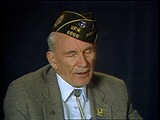
-
Abraham Klausner describes encountering survivors of the Dachau camp
Oral HistoryRabbi Abraham Klausner was a US Army military chaplain. He arrived in the Dachau concentration camp in May 1945. He was attached to the 116th evacuation hospital unit and worked for about five years in displaced persons camps, assisting Jewish survivors.
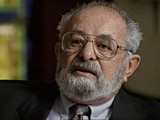
-
On the waiting list for American visas
DocumentSelmar and Elsa Biener joined the waiting list for US immigration visas in September 1938. Their waiting list numbers—45,685 and 45,686—indicate the number of people who had registered with the US consulate in Berlin. By September 1938, approximately 220,000 people throughout Germany, mostly Jews, were on the waiting list.
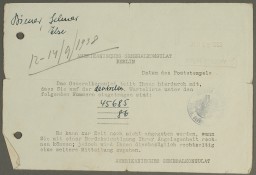
-
Child Survivors Arrive in England
Timeline EventAugust 15, 1945. On this date, Alice Goldberger, a relief worker and Holocaust survivor, received some of the first children survivors to England

-
John Pehle
PhotoPortrait of John Pehle, Executive Director of the War Refugee Board. United States, 1940s.
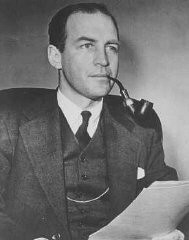
-
Laura Bush, George Bush, and Benjamin Meed during Days of Remembrance 2001
PhotoLaura Bush, George Bush, and Benjamin Meed during the Days of Remembrance ceremony in 2001, the theme of which was "Remembering the past for the sake of the future." Days of Remembrance was established by the United States Congress as the United States' annual commemoration of the victims of the Holocaust, just as the United States Holocaust Memorial Museum was established as a permanent living memorial to those victims.
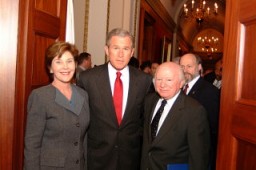
-
Flag graphic for US 103rd Infantry Division
PhotoA digital representation of the United States 103rd Infantry Division flag. The US 103rd Infantry Division (the "Cactus" division) was established in 1942. During World War II, they were involved in the Battle of the Bulge and captured the city of Innsbruck. The division also uncovered a Nazi subcamp attached to Kaufering camp complex. The 103rd Infantry Division was recognized as a liberating unit in 1985 by the US Army's Center of Military History and the United States Holocaust Memorial Museum…

-
Lion Feuchtwanger arriving in New York
PhotoLion Feuchtwanger aboard the ship Excalibur, arriving in New York. United States, October 1940.
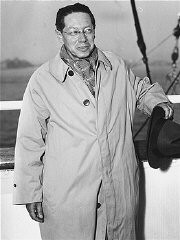
-
Wagner-Rogers Bill
Timeline EventFebruary 9, 1939. On this date, the Wagner-Rogers bill was introduced, ultimately unsuccessfully, to permit the entry of 20,000 European refugee children into the United States.
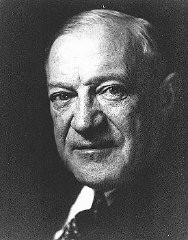
-
Charlene Schiff describes her liberation by Soviet troops
Oral HistoryBoth of Charlene's parents were local Jewish community leaders, and the family was active in community life. Charlene's father was a professor of philosophy at the State University of Lvov. World War II began with the German invasion of Poland on September 1, 1939. Charlene's town was in the part of eastern Poland occupied by the Soviet Union under the German-Soviet Pact of August 1939. Under the Soviet occupation, the family remained in its home and Charlene's father continued to teach. The Germans…
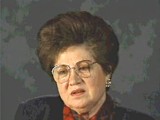
-
Meeting of the War Refugee Board
PhotoMeeting of the War Refugee Board in the office of Executive Director John Pehle. Pictured left to right are Albert Abrahamson, Assistant Secretary of the Treasury Josiah Dubois, and Pehle. Washington, DC, United States, March 21, 1944.

-
Images of a peaceful Germany
PhotoAn American travel agency displays images of a peaceful Germany sent by the German Railways Information Office to attract visitors to the 1936 Olympic Games in Berlin. United States, prewar.

-
Stephen S. Wise
PhotoStephen S. Wise, later to become president of the World Jewish Congress, speaks at an anti-Nazi rally at Madison Square Garden. New York, United States, March 27, 1933.
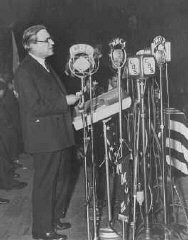
-
Elie Wiesel speaks at a conference
PhotoElie Wiesel speaks at the Faith in Humankind conference, held before the opening of the United States Holocaust Memorial Museum, on September 18–19, 1984, in Washington, DC.
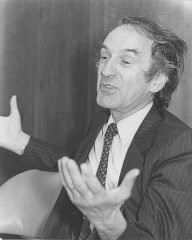
-
Elie Wiesel speaks at the Faith in Humankind conference
PhotoElie Wiesel speaks at the Faith in Humankind conference, held several years before the opening of the United States Holocaust Memorial Museum. September 18–19, 1984, in Washington, DC.
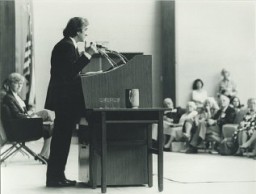
-
American propaganda announcement
DocumentAnnouncement dropped by American planes on Shanghai near the end of the war. [From the USHMM special exhibition Flight and Rescue.]
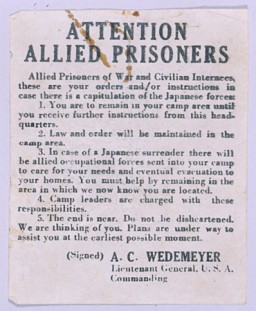
-
Frank Hamburger describes the Ohrdruf camp
Oral HistoryFrank F. Hamburger, Jr., of Columbus, Georgia, was with the 65th Infantry Division.

-
US Forces Liberate Flossenbürg
Timeline EventApril 23, 1945. On this date, US forces liberated the Flossenbürg camp in Germany.
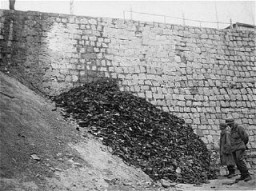
-
Anti-Nazi protest organized by American Jewish Congress
FilmThe American Jewish Congress was among the first groups in the United States to oppose Nazism. It held a mass rally as early as March 1933, soon after Hitler rose to power in Germany, and continued to hold rallies throughout the war years. The American Jewish Congress organized this anti-Nazi march through Lower Manhattan. The event coincided with book burning in Germany.
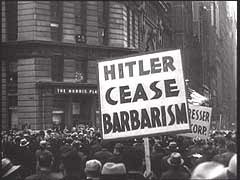
-
A meeting of the War Refugee Board
PhotoPhoto taken in Secretary of State Cordell Hull's office on the occasion of the third meeting of the War Refugee Board. Hull is at the left, Secretary of the Treasury Henry Morgenthau, Jr., is in the center, and Secretary of War Henry L. Stimson is at the right. Washington, DC, United States, March 21, 1944.

-
American Jewish leaders participate in a mass demonstration
PhotoDr. Bernard Deutsch, president of the American Jewish Congress (center) and Rabbi Stephen S. Wise (right) participate in a mass demonstration against Nazi treatment of German Jews. The demonstration took place on the same day as the book burnings in Germany. New York, United States, May 10, 1933.

-
Elie Wiesel
PhotoElie Wiesel became Founding Chairman of the United States Holocaust Memorial Council in 1980. Here, he speaks at a ceremony held during the Tribute to Holocaust Survivors, one of the Museum's tenth anniversary events. Flags of US Army liberating divisions form the backdrop to the ceremony. Washington, DC, November 2003.

-
Third meeting of the War Refugee Board
PhotoThird meeting of the board of directors of the War Refugee Board. From the left are Secretary of State Cordell Hull, Treasury Secretary Henry Morgenthau, Secretary of War Henry Stimson, and Executive Director John Pehle. Washington, DC, United States, March 21, 1944.

-
President Franklin D. Roosevelt in the Oval office at the White House
PhotoPresident Franklin D. Roosevelt in the Oval office at the White House, shortly before delivering a speech accepting the Democratic Party's presidential nomination. Washington, DC, United States, July 24, 1940.
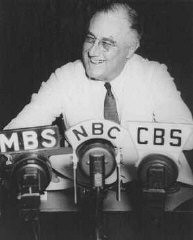
-
Elie Wiesel with his wife and son during the Faith in Humankind conference
PhotoElie Wiesel (right) with his wife and son during the Faith in Humankind conference, held several years before the opening of the United States Holocaust Memorial Museum. September 18–19, 1984, in Washington, DC.

-
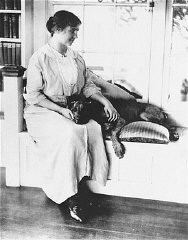
-
Blanka's embarkation card for the SS Marine Marlin
PhotoThe American Jewish Joint Distribution Committee helped to locate relatives of Blanka's who lived in the United States. Blanka crossed the Atlantic Ocean in the winter on the SS Marine Marlin, a troop transporter. The trip took over two weeks during storms and rough seas. The ship was damaged, and Blanka, along with the other refugees traveling in the lowest quarters, had to walk in water for days. This photograph shows Blanka's embarkation card for the SS Marine Marlin, with a sailing date in January…
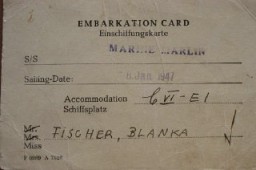
-
Otto-Karl Gruenbaum
ID CardBorn to a Jewish father and a Catholic mother, Otto grew up in a city well known for its musical tradition. The younger of two children, Otto began studying the piano at age 10. After entering the Vienna Conservatory of Music, he gave his first concert at age 14. Encouraged by Maestro Bruno Walter, he hoped to become a conductor and concert pianist. 1933-39: After Germany annexed Austria in March 1938, Otto was kicked out of the Vienna Conservatory. One night, two men ordered him to go with them to a…
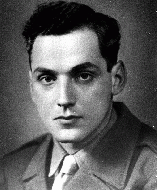
-
Germans bomb Coventry
FilmOn the night of November 14-15, 1940, almost 500 German bombers attacked the British industrial city of Coventry in central England. The bombers dropped 150,000 incendiary bombs and more than 500 tons of high explosives. The air raid destroyed much of the city center, including 12 armament factories and the historic Saint Michael's Cathedral. This footage shows scenes from the aftermath of the attack. The bombing of Coventry came to symbolize, to Britain, the ruthlessness of modern air warfare.
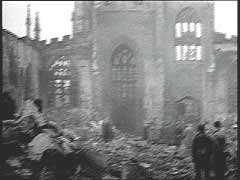
-
Air raid shelter in London during the Blitz
FilmAfter the defeat of France in June 1940, Germany moved to gain air superiority over Great Britain as a prelude to an invasion of Britain. During almost nightly German air raids (known as "the Blitz") on London, the civilian population of the city sought refuge--as shown in this footage--in air raid shelters and in London's subway system (called the "Underground" or the "Tube"). Despite months of air attacks, Germany was not able to destroy Britain's Royal Air Force (RAF). In the fall of 1940, the invasion…

-
Memorial Pageant calls for the rescue of European Jewry
FilmAfter word reached America of the Nazi killing of European Jewry, pressure mounted on the Roosevelt administration to help European Jews. To spur action, playwright Ben Hecht prepared a memorial to the Jewish victims of Nazi persecution, "We Will Never Die." The pageant, sponsored by the Zionist Revisionist Bergson Group, was part of a mass demonstration at Madison Square Garden in New York City. Later seen in other US cities, the show was part of the Bergson Group's effort to pressure Washington to act…

